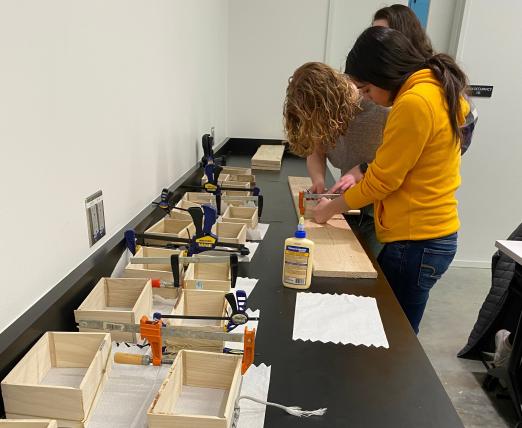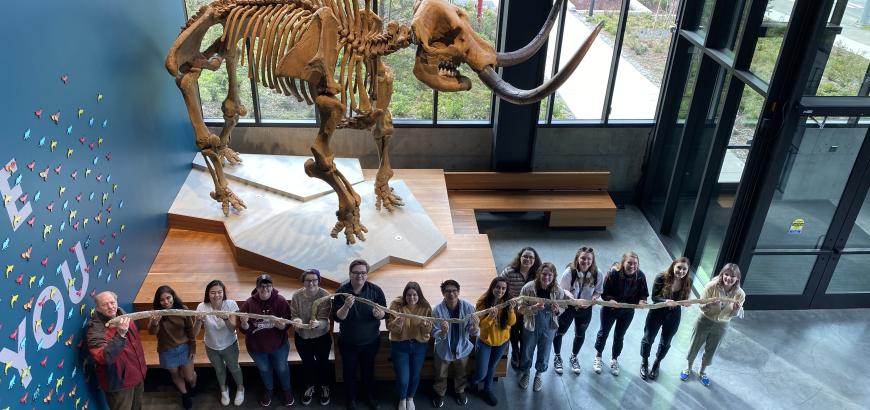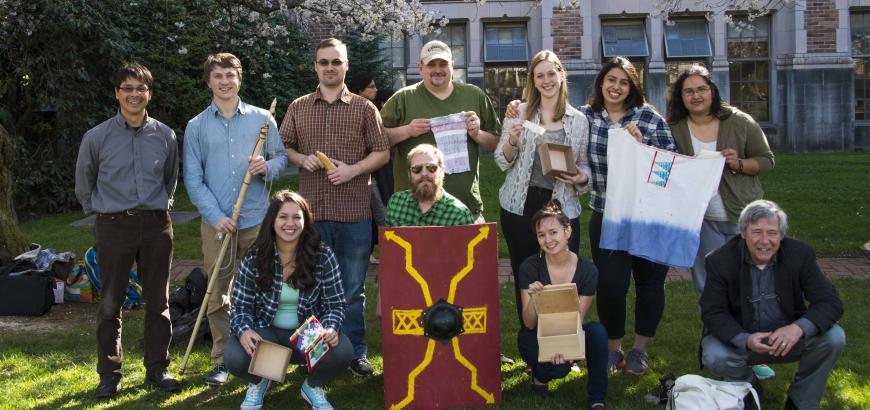by Sven Haakanson
Ethnoarchaeology is a sub-field within archaeology that uses sociocultural and archaeological research methods to understand how archaeological sites are created by living people. I had the privilege to conduct ethnoarchaeological research from 1994-98 with the Nenet Reindeer Herders from the Yamal Peninsula, Russia, where I documented how they created, occupied, and abandoned their sites. This experience taught me to see the complexities involved in interpreting archaeological sites. Imagine trying to interpret a site without prior knowledge of who the people were, their culture or what happened at a site — not an easy task. Every culture, community, family and person living within a site makes each site unique and distinct because of how our cultures influence how we live, interact, and use the space that becomes an archaeological site. It is challenging for archaeologists to understand culture from just material culture and ethnoarchaeology strives to contextual how to start interpreting this knowledge.
For the past six years at the UW, I have taught an ethnoarchaeology class that utilizes what I learned from living with the Nenets and from my community, the Sugpiat, from Kodiak, Alaska. I use this course to get students to start thinking about methods and theories that are used to interpret sites from around the world. They are assigned readings and have to write about the diverse approaches these take. However, I also use a more hands-on approach; each week, I have the students make something in class. We carve small masks, paddles, darts and whales, make needle case holders and sew small gut bags. Two of the highlights for the students are learning how to process bear intestine (for making traditional water-proof garments) and learning to make bentwood boxes.

I also require them to select, and make, a cultural piece (artifact) from a culture of their choice as part of their final assignment. They research their object and then visit the Burke Museums collections to see the actual piece. They use modern tools and materials due to our limited time. Through this hands-on experience the students learn how materials were gathered, processed, and used to create a piece. Where possible I ask them to reach out to the communities where the cultural piece is from to learn more then they would just from books or on-line resources. This engaged learning allows them to think about the cultural context of what they made, how it was used, who used it, and how or why it may have been discarded at a site.

It is important to share and teach such skills to our students because it inspires them to try new things outside of their comfort level. During this process I have seen students asking more questions and inquiring into details they would not normally have explored. Every year I am humbled by what they create as their final projects (many students create items of personal and cultural significance). Among the many objects students have created are a Tlingit bentwood box and halibut hook, moccasins, a Roman hasta, traditional fish traps, pueblo pottery, Cowichen sweater, Lummi woman’s paddle, Lakota arrows, English longbow, Balintawak, Alutiiq grass basket, Katupat, Shiv lingam, Chagudax (Unangan Bentwood hat), Mallorcan Sling, Makah fishing club, Apache fiddle, Areni-1 Shoes, Iron Age bog hat, model outrigger canoe, Palermo-style puppet, tigre (Jaguar Mask), and a Tlingit Helmet. Here are some of my favorite quotes from students that sum the value of the experience:
"Creating a Tigre (Jaguar Mask) challenged me to dig deeper into my cultural roots. I enjoyed having the opportunity to recreate something significant to my culture." — Emily Castorena, 2020
“Recreating the areni-1 shoe gave me the opportunity to be able to learn centuries-old techniques. This experience inspired me to always be curious about environmental contexts and challenges that people wearing these shoes faced collectively.” — Sana Ovchiyan, 2019
“Working on this project also allowed stories to emerge from my father’s side of the family. Asking the right questions and listening carefully is an important step in order to gain knowledge that otherwise would have been forgotten.” — Sana Ovchiyan, 2019



